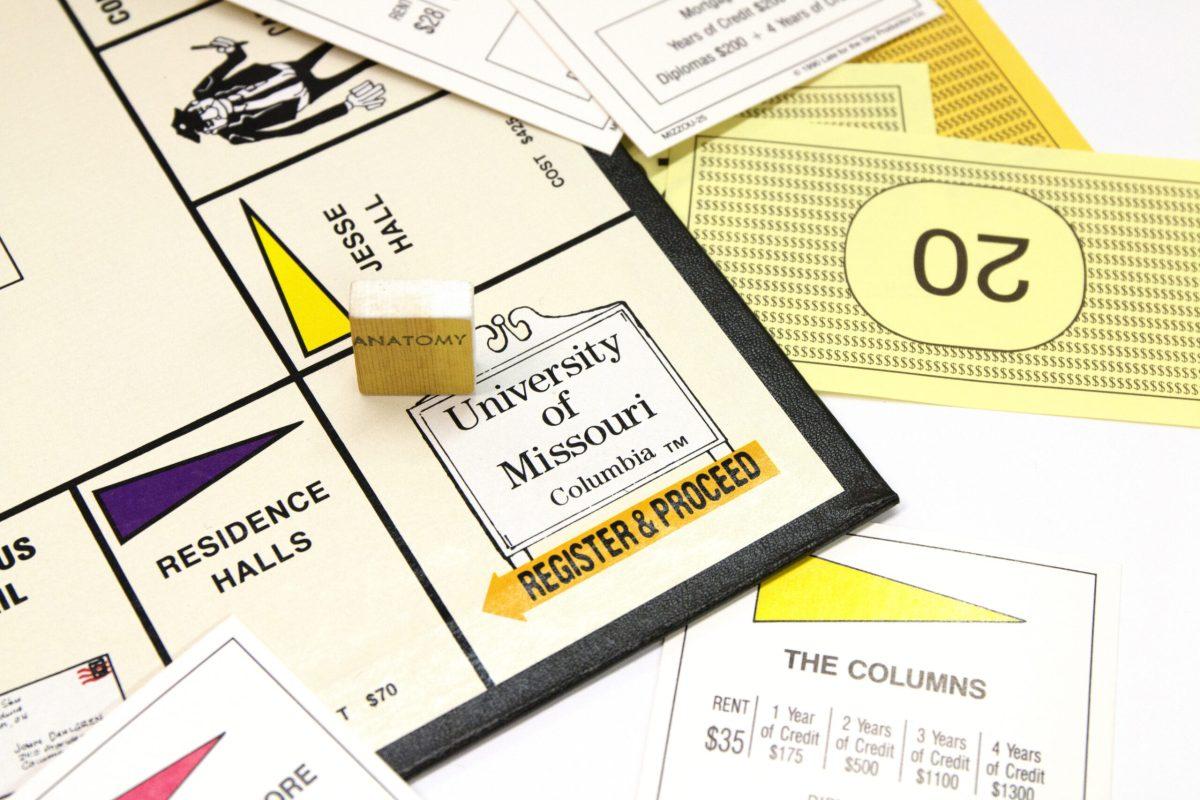
$7 thrift store find for a board game that perfectly encapsulates MU culture? I think yes!
Video made by Eric Keikeben
Hiding in a Springfield, Missouri thrift store laid a true MU gem.
From the bottom shelf of the media aisle, among coffee table books and gospel records, the words, “MIZZOUOPOLY,” in that signature black and gold, called out to me. It had that vintage look, was only $7 and the premise was hilarious enough to catch my attention. What evil person would leave such a relic behind? Of course, I had to buy it and take a closer look.
The monopoly-inspired board game was released in 1990 by the Late for the Sky Production Company based in Cincinnati, Ohio.
“In 1984, Late for the Sky Production Company started making board games based on colleges,” the back of the box reads. “We visited campuses across the country and designed a unique game for each.”
From Stanford to Kansas State, MU was one of 50 colleges that received the privilege of having its campus enshrined into a board game. The result? A time capsule of our university’s culture from over 30 years ago. In fact, many aspects of the game still hold their own today.
The game follows the standard Monopoly setup. It includes the typical game board, paper money, player tokens, cards, deeds, etc. However, each feature has its own college and MU-specific touch, adding a nostalgic twist on the age-old game that not a single soul has ever finished.
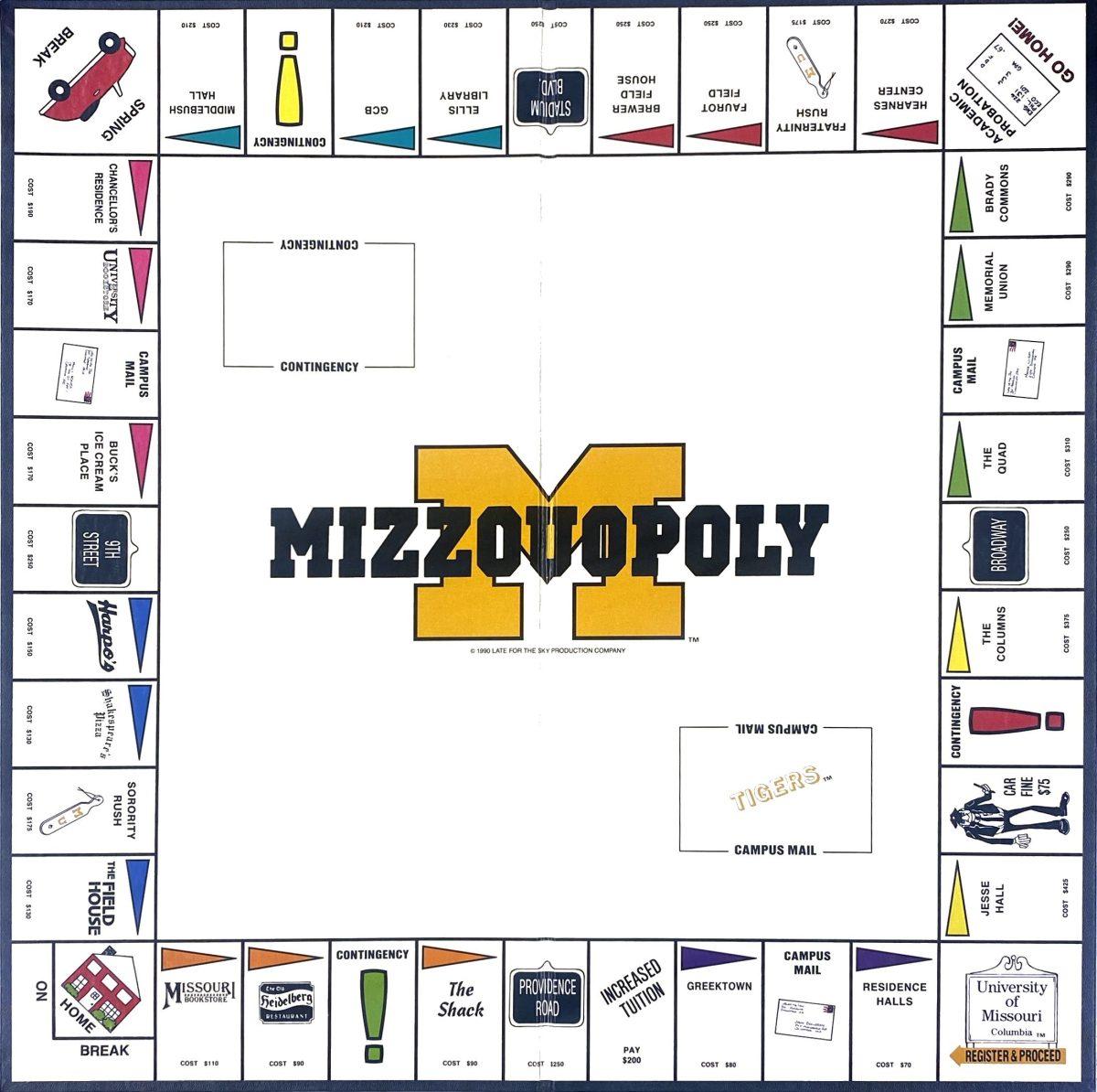
The first thing I noticed was the gameboard itself.
First, players start at college registration before proceeding to campus — no Common App required! While moving your token across the squares, you’ll notice that traditional Monopoly streets are replaced by MU landmarks; from Greektown, to Francis Quadrangle (simply called “the Quad” here) to Faurot Field. And what’s this game’s version of Boardwalk, you ask? None other than Jesse Hall, of course!
Players can even own downtown staples like Shakespeare’s, The Heidelberg, Harpo’s and the Fieldhouse — all places that have sustained their crucial role in college life even 33 years later.
The Shack makes an appearance in the game, however, the game isn’t referring to the one current students know and love. The original site of The Shack was where the Reynolds Alumni Center is now located. Just six years before the game was released, in 1984, the popular student hangout closed its doors. Four years later, in 1988, the building was burned down in an accident.
I also noticed a few places on the board that may seem completely unfamiliar to current students. Specifically the two squares called “Brady Commons” and “GCB.” Let’s dive a little deeper into these places, shall we?


Brady Commons refers to the old name of the Student Center. The building went by that name until about 2009 — almost 20 years after Mizzouopoly was released. You can read more about the history of MU’s Student Center in a recent “Then and Now Column”.
The GCB, or General Classroom Building, was the original name of the building now known as Strickland Hall. The building was renamed in 2008 to honor the university’s first Black professor, Arvarh E. Strickland.
The traditional Monopoly railroads were swapped out for notable roads hugging campus: 9th Street, Stadium Boulevard, Providence Road and Broadway Street. The utilities were replaced with “Sorority Rush” and “Fraternity Rush.” Instead of going to jail, you are placed on academic probation and sent home, and instead of the “free parking” square, players are on spring break! Even the tokens are changed to be something all college students know and love to carry around: textbooks! There’s english, calculus, psychology, anatomy and art.
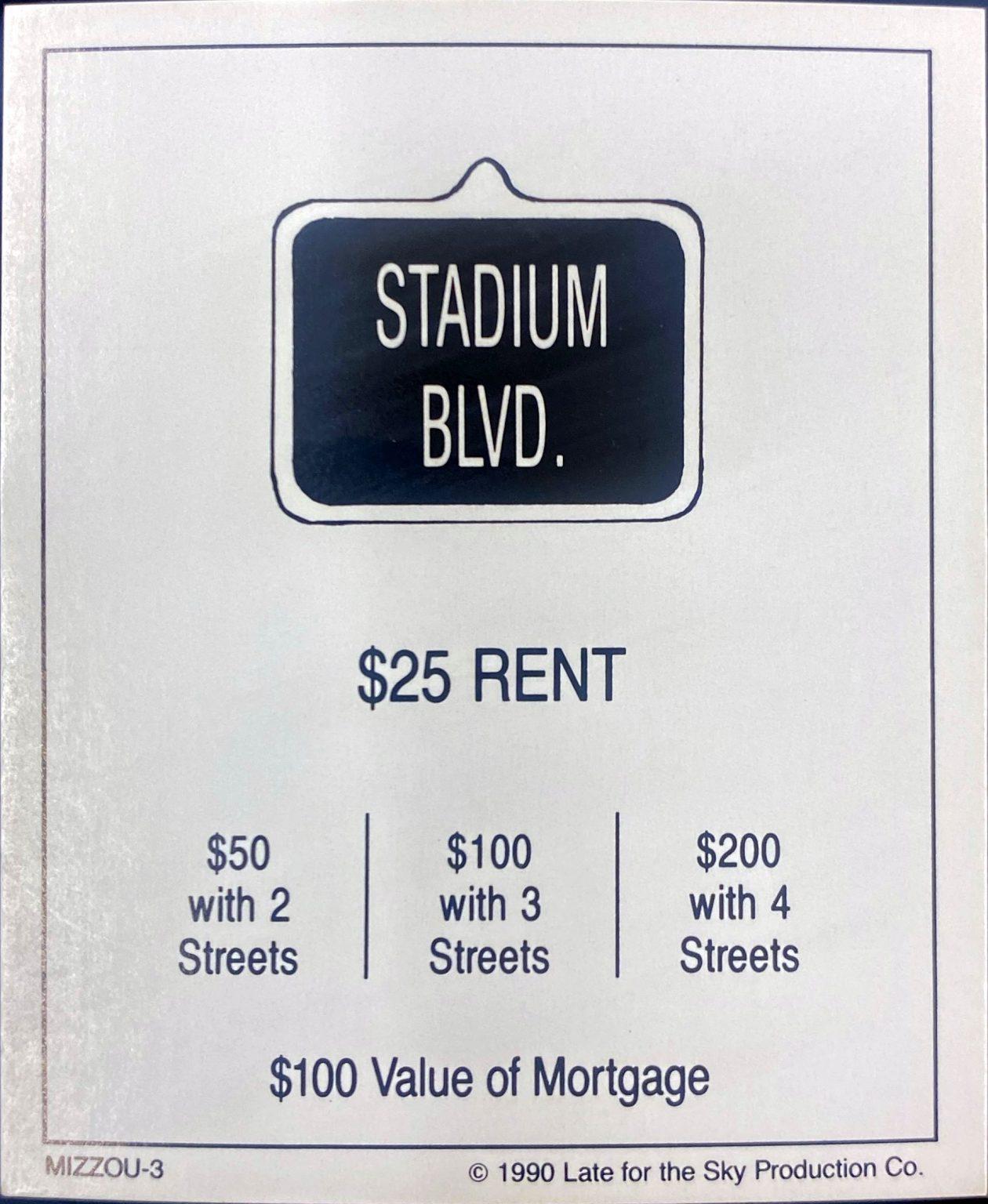
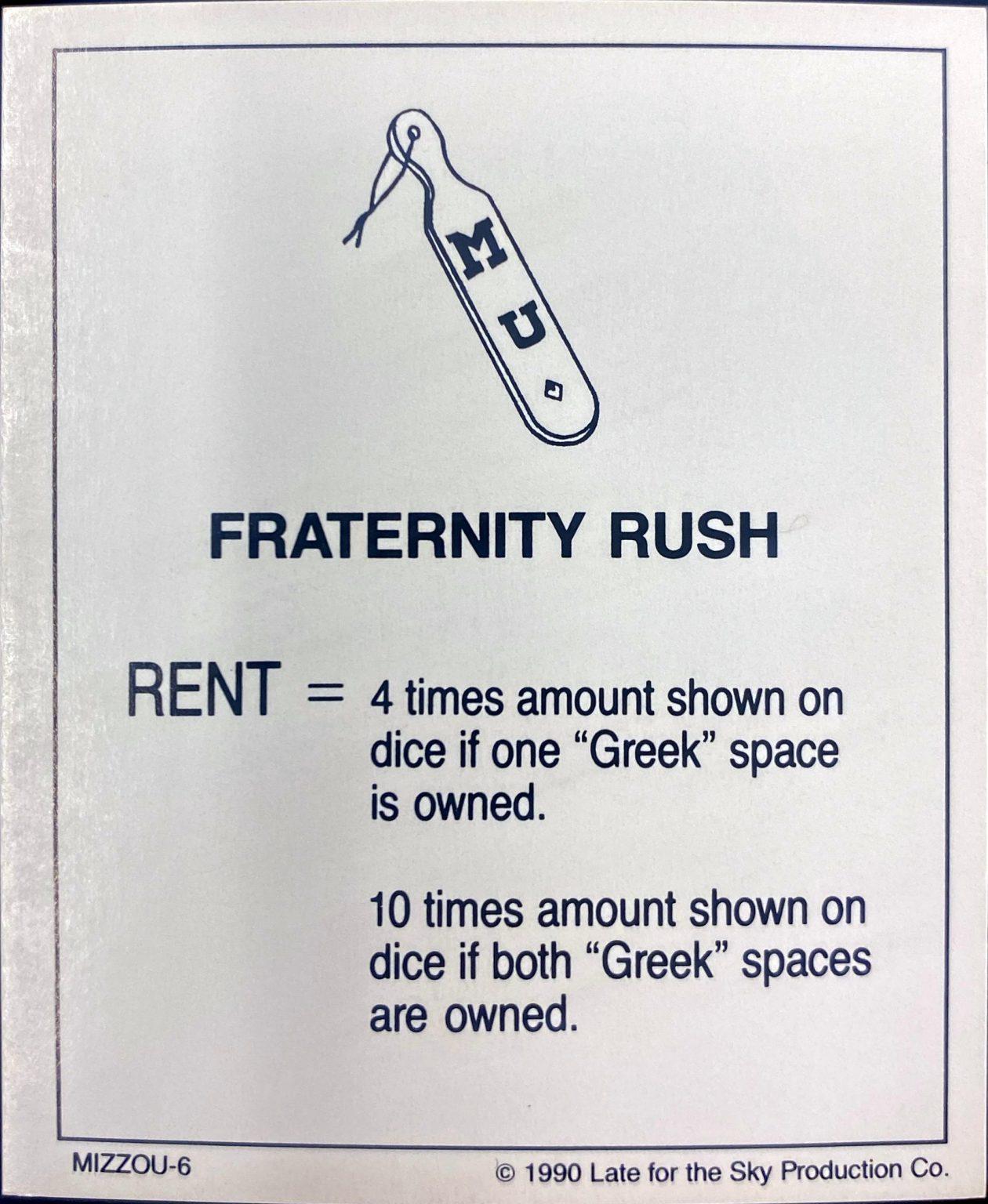
Here are a few of my favorite “contingency” and “campus mail” cards from the game. Take a shot — of water — for every card that feels extra relatable.


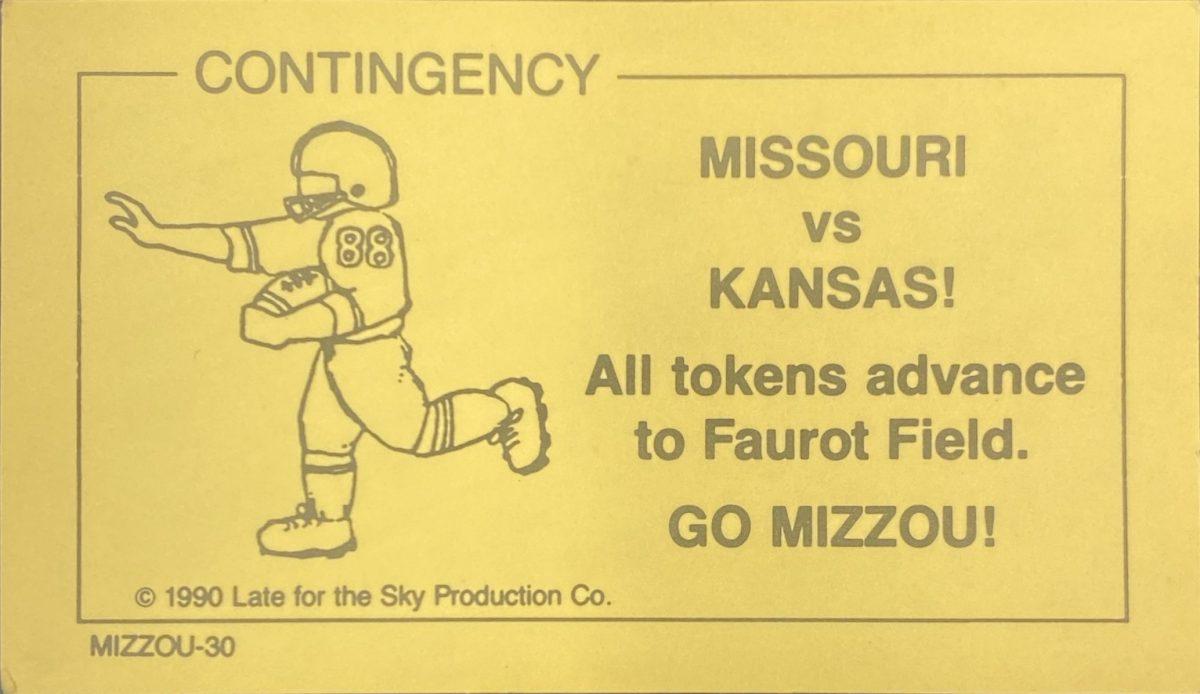

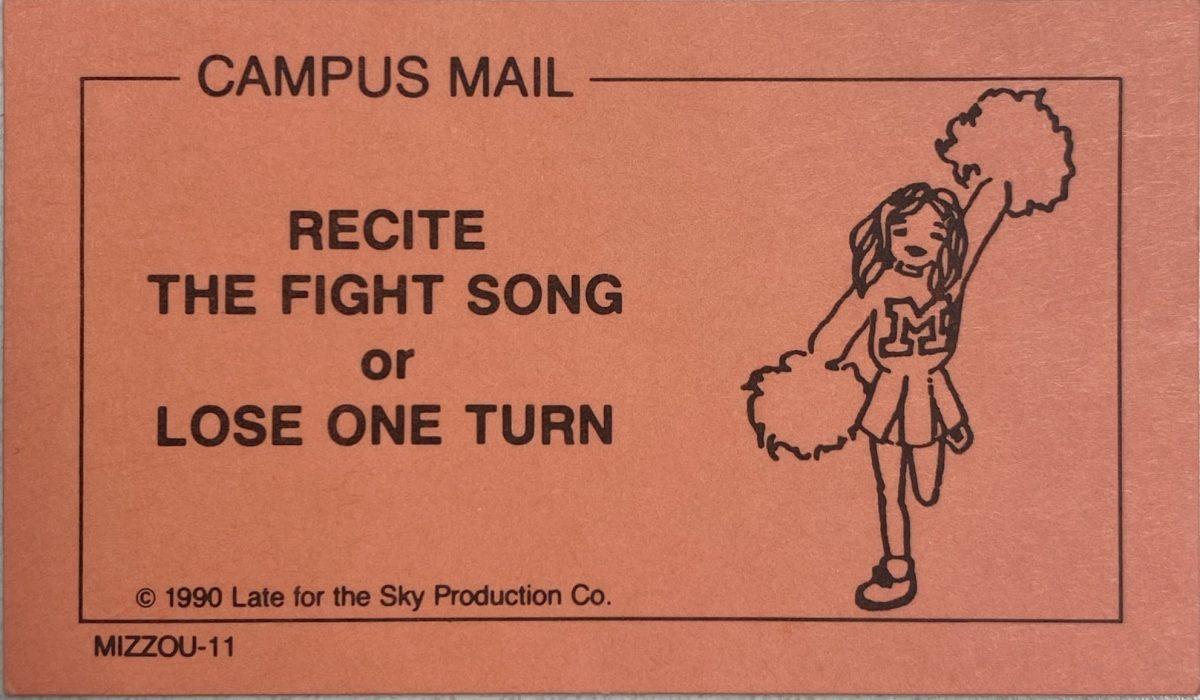

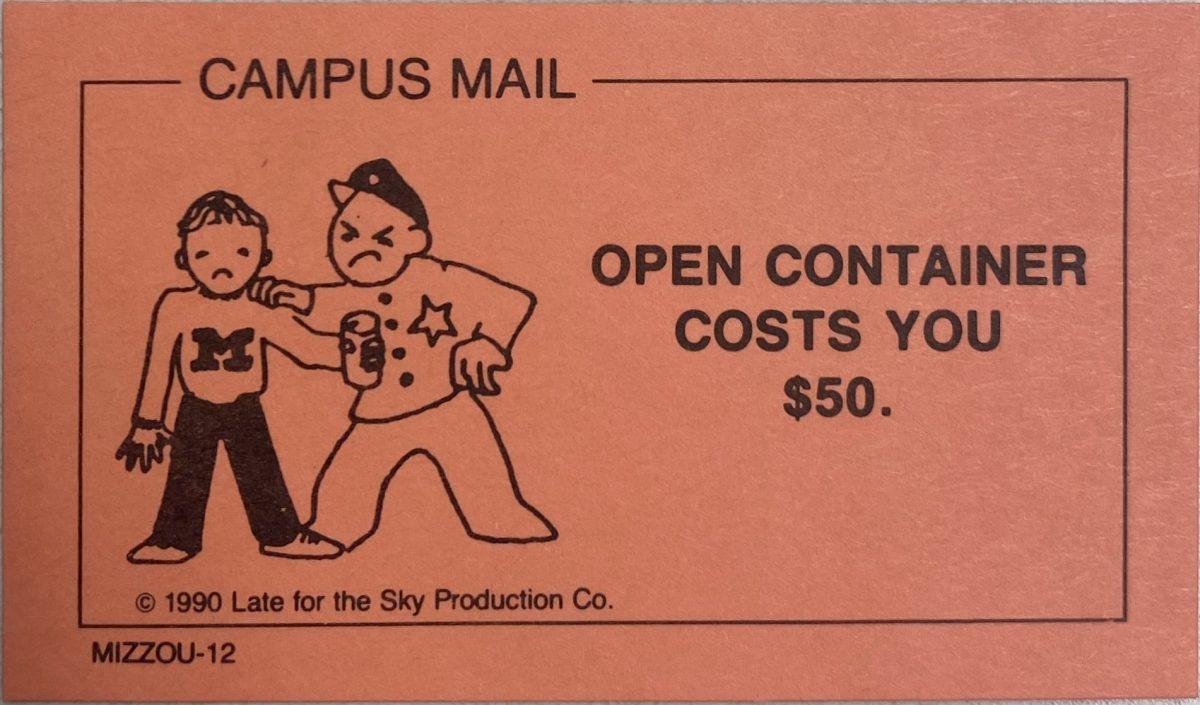
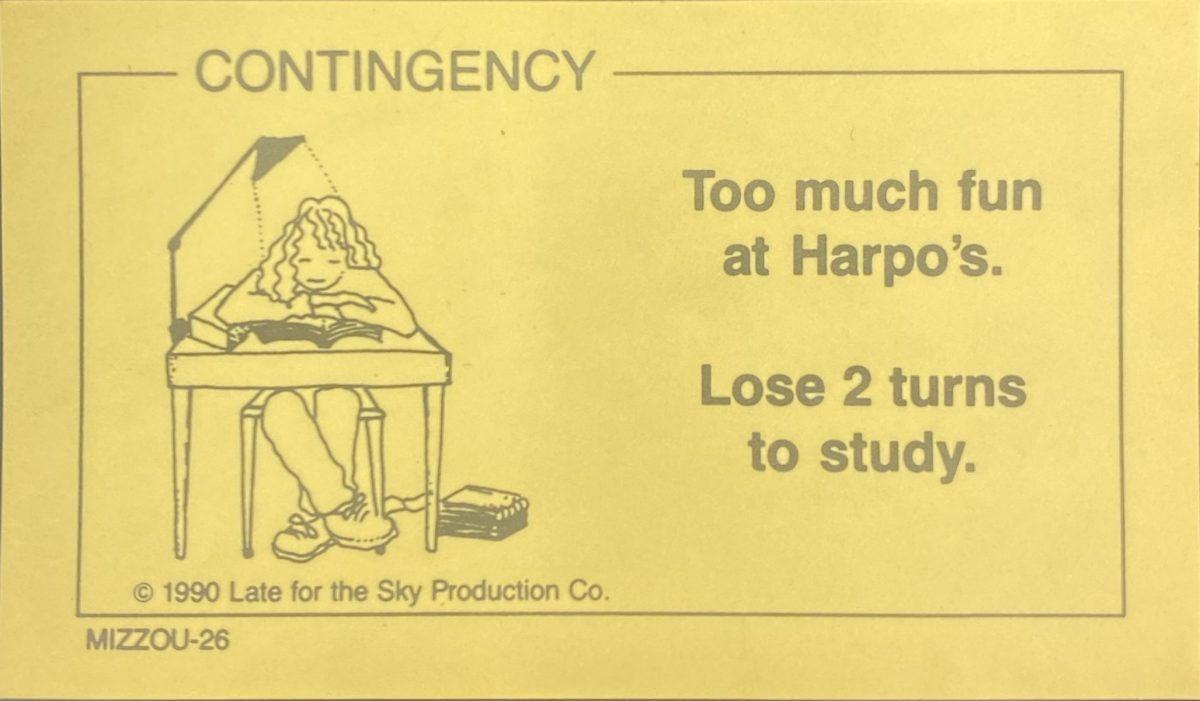
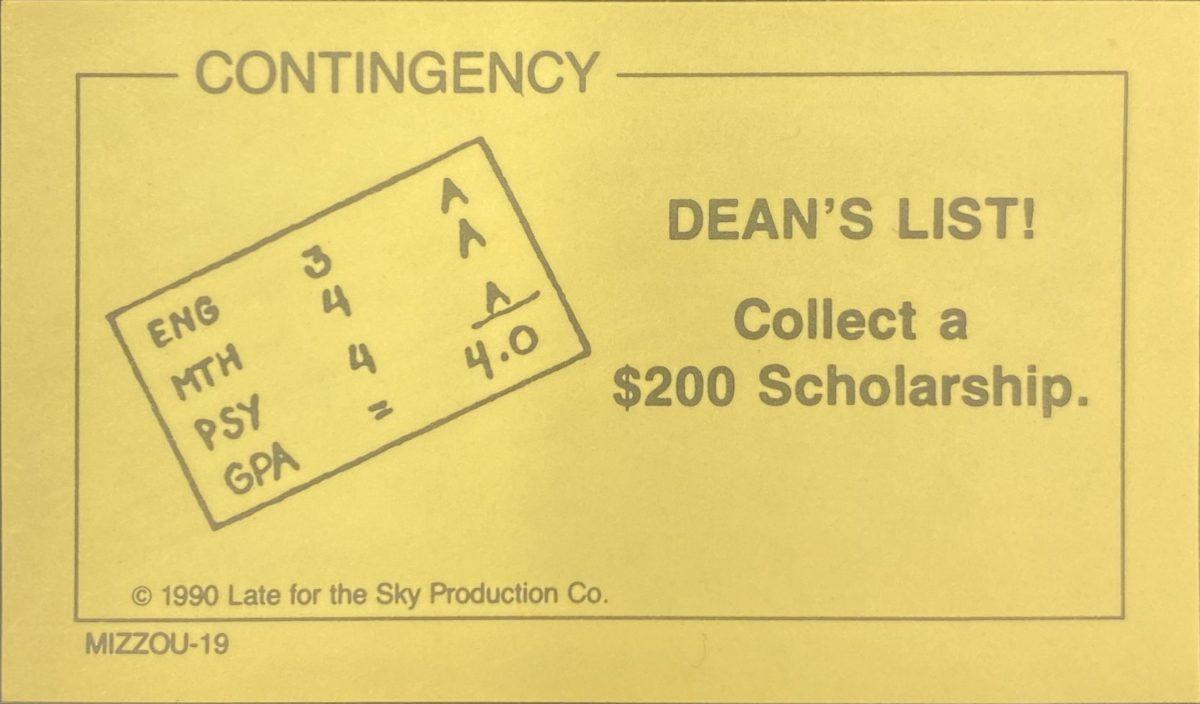

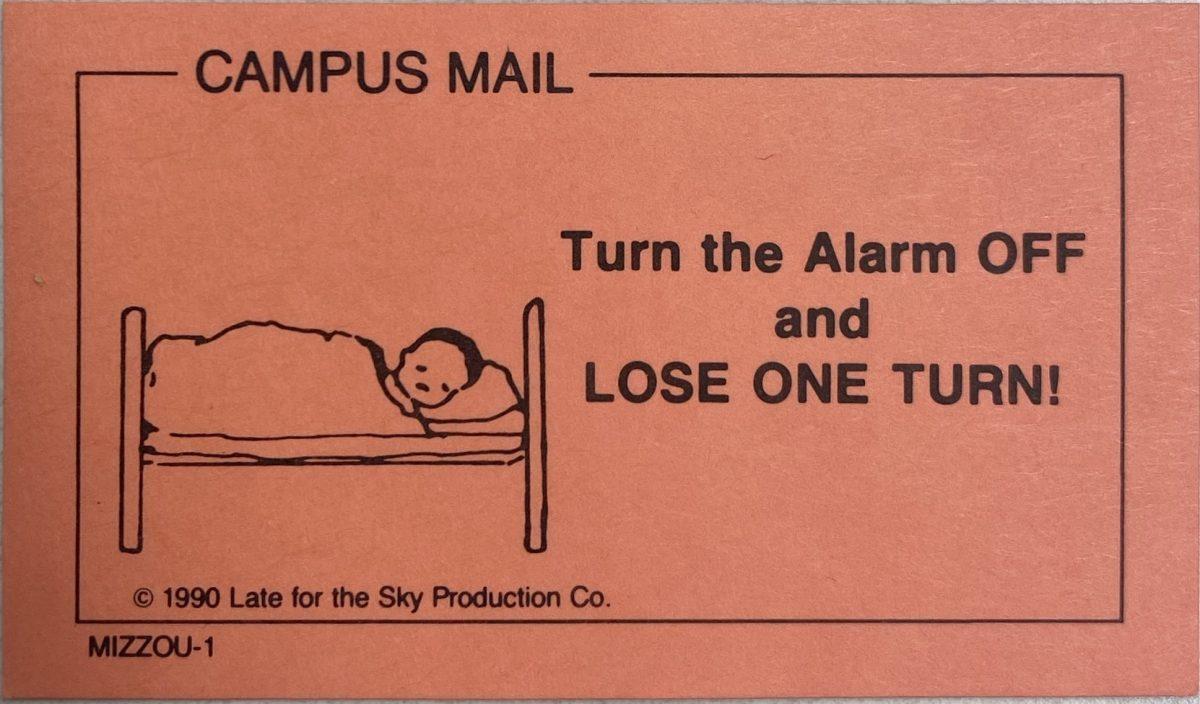
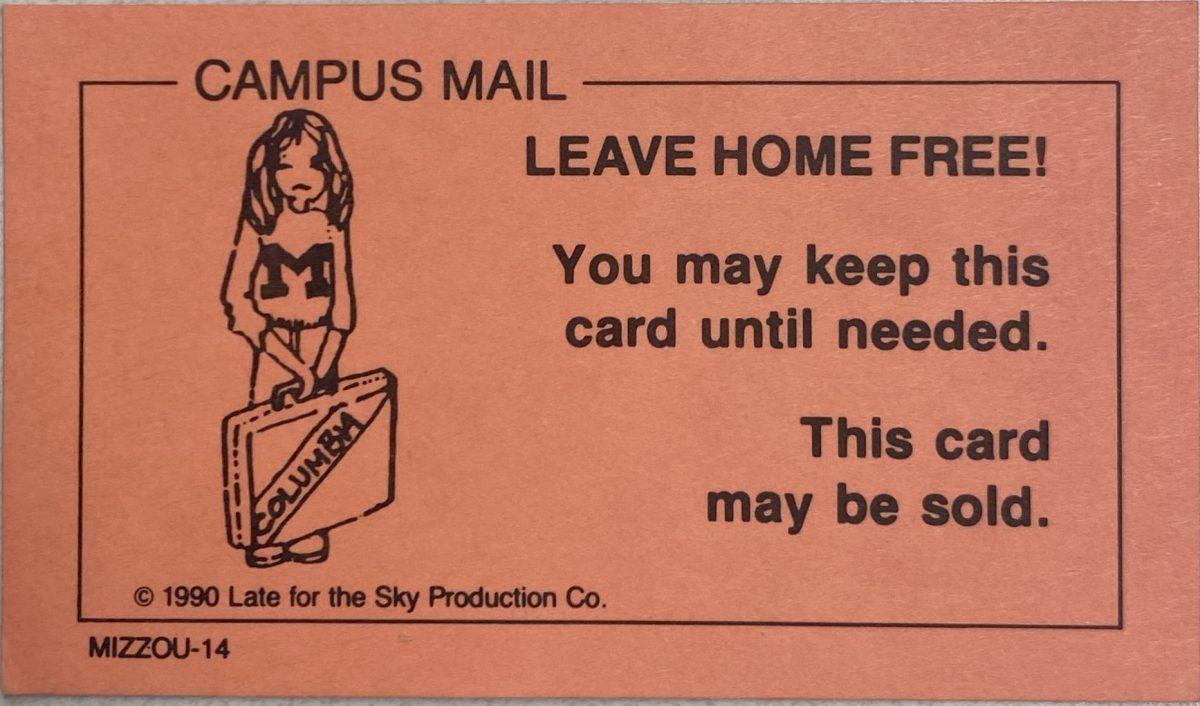
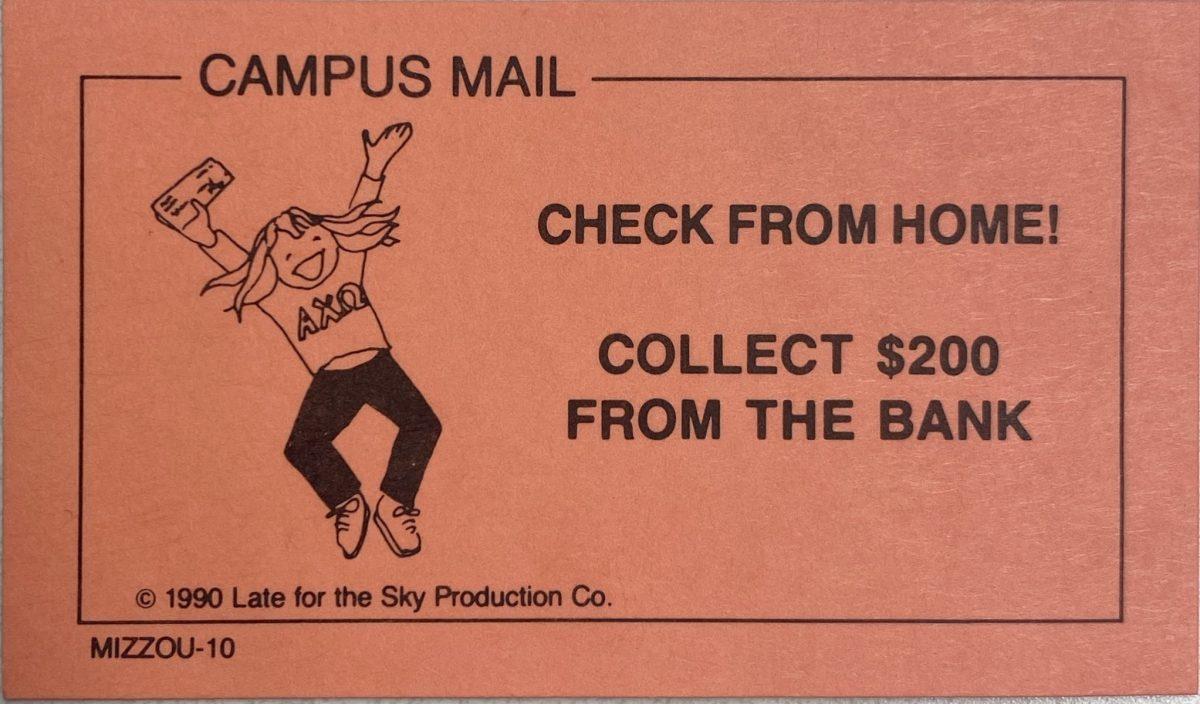
To be completely transparent, I now have an unhealthy obsession with showing people this game. I’ll probably be buried with it. Will the personalized touches finally incentivize me to finish an entire game of Monopoly? Probably not. However, it has been fun looking over the parts and pieces with fellow MU students to get a sense of what campus culture was like in the ‘90s.
Edited by Abigail Henshaw, [email protected] edited by Sterling Sewell and Lauren Courtney
